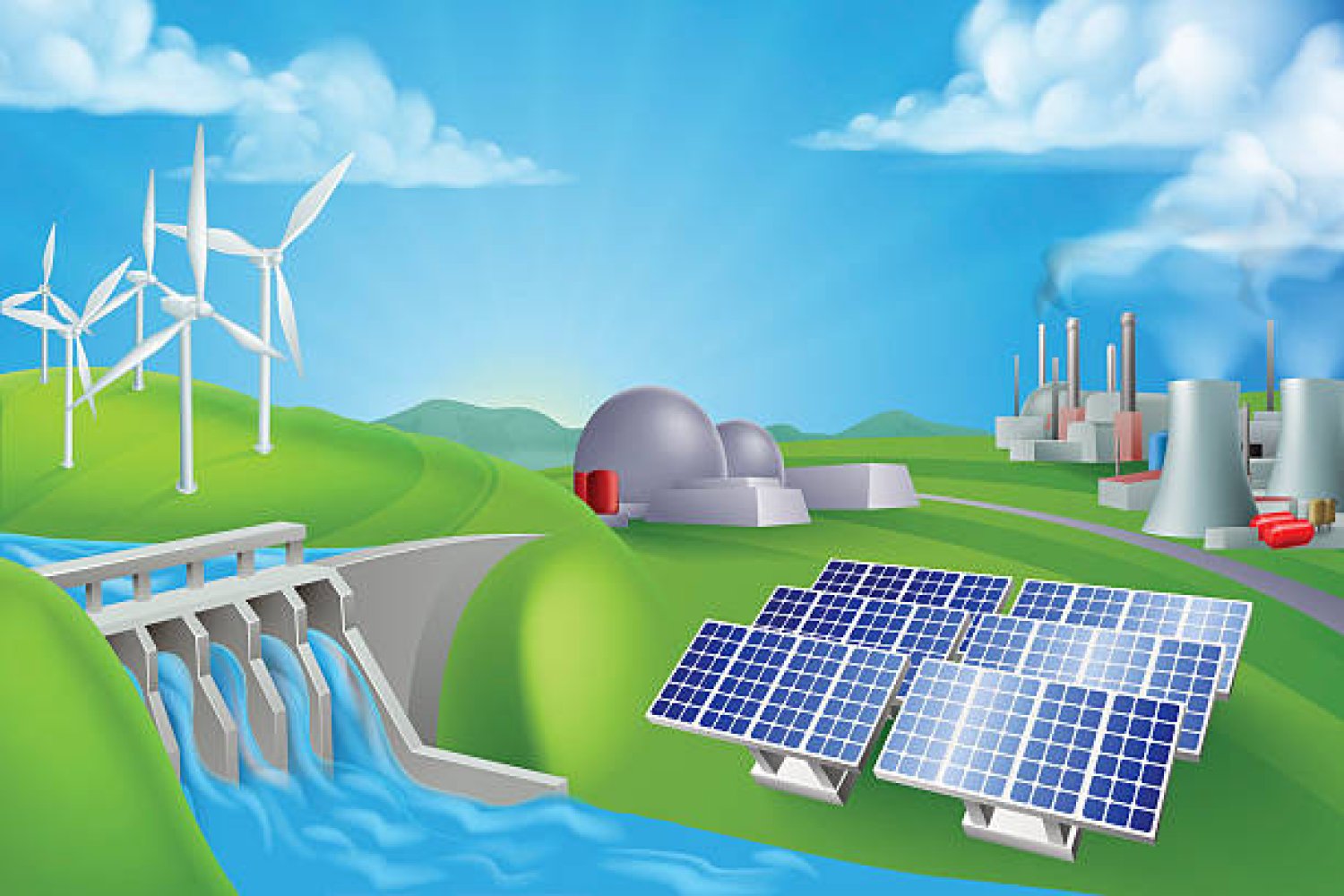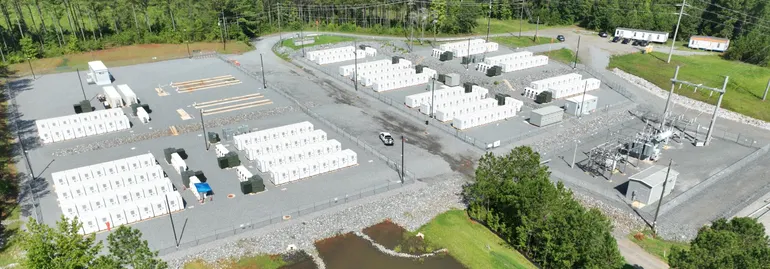Energy Vault, PG&E Announce Successful Completion of the Calistoga Resiliency Center, the World’s First Ultra-Long Duration Hybrid Battery + Hydrogen Energy Storage Microgrid – PR Newswire

Report on the Calistoga Resiliency Center and its Contribution to Sustainable Development Goals
Executive Summary
Energy Vault Holdings Inc. and Pacific Gas and Electric Company (PG&E) have announced the commercial operation of the Calistoga Resiliency Center (CRC). This report details the project’s specifications and analyzes its significant contributions to several United Nations Sustainable Development Goals (SDGs), including SDG 7 (Affordable and Clean Energy), SDG 9 (Industry, Innovation, and Infrastructure), SDG 11 (Sustainable Cities and Communities), SDG 13 (Climate Action), and SDG 17 (Partnerships for the Goals). The CRC serves as a pioneering model for sustainable energy infrastructure designed to enhance community resilience against climate-related disruptions.
Project Overview and Specifications
- Project: Calistoga Resiliency Center (CRC)
- Location: Calistoga, California, USA
- Technology: A hybrid microgrid integrating advanced hydrogen fuel cells with lithium-ion batteries, managed by the VaultOS
 Energy Management System.
Energy Management System. - Capacity: 293 megawatt-hours (MWh) with a peak power output of 8.5 megawatts (MW).
- Duration: Capable of delivering at least 48 hours of continuous energy supply during grid outages.
- Purpose: To provide uninterrupted power to approximately 1,600 customers during Public Safety Power Shutoffs (PSPS) initiated due to high wildfire risk.
Alignment with Sustainable Development Goals (SDGs)
SDG 7: Affordable and Clean Energy
The CRC directly advances the goal of ensuring access to affordable, reliable, sustainable, and modern energy for all.
- Clean Energy Generation: The facility is a zero-emission system that utilizes green hydrogen and battery storage, aligning with California’s Renewable Portfolio Standard (RPS).
- Energy Reliability: It guarantees a continuous, multi-day power supply for the Calistoga community, enhancing energy security and access, particularly for a community vulnerable to grid disruptions.
- Sustainable Technology: The use of liquid hydrogen allows for extended run times without interrupting power, providing a sustainable alternative to fossil-fuel-based backup systems.
SDG 9: Industry, Innovation, and Infrastructure
The project exemplifies innovation in building resilient infrastructure to support economic development and human well-being.
- Pioneering Innovation: The CRC is the world’s first ultra-long-duration hybrid microgrid combining battery and hydrogen energy storage, establishing a new industry standard.
- Resilient Infrastructure: It provides a critical infrastructure solution designed to withstand and operate independently during extreme weather events and safety-related grid shutdowns.
- Scalable Blueprint: The project’s successful implementation creates a replicable and bankable model for future sustainable microgrid installations in other regions facing similar climate-related challenges.
SDG 11: Sustainable Cities and Communities
The CRC makes the community of Calistoga more inclusive, safe, resilient, and sustainable.
- Enhanced Community Resilience: By preventing power loss during PSPS events, the microgrid protects the community from disruptions and ensures the continued operation of essential services like medical facilities, fire stations, and grocery stores.
- Climate Adaptation: The facility is a direct response to the increasing threat of wildfires, a key climate-related risk in California, thereby making the community safer and better adapted to its environment.
- Community-Focused Programs: The project is part of PG&E’s broader strategy, including the Community Microgrid Enablement Program (CMEP) and Microgrid Incentive Program (MIP), which support community-driven resiliency solutions.
SDG 13: Climate Action
The project represents a significant step in combating climate change and its impacts through both mitigation and adaptation.
- Climate Change Adaptation: The primary function of the CRC is to help a community adapt to the severe impacts of climate change, namely the increased frequency and intensity of wildfires that necessitate PSPS events.
- Climate Change Mitigation: As a zero-emission facility, the CRC avoids greenhouse gas emissions associated with traditional backup power generation, contributing to climate mitigation efforts.
SDG 17: Partnerships for the Goals
The successful completion of the CRC was made possible through a multi-stakeholder partnership, demonstrating a collaborative approach to achieving sustainable development.
- Public-Private Partnership: The project is a collaboration between Energy Vault, a private technology leader, and PG&E, a public utility, under a long-term energy services agreement.
- Regulatory Support: It aligns with the long-term vision of the California Public Utility Commission to ensure power resiliency across the state.
- Financial Collaboration: The project was facilitated by $28 million in financing, showcasing the role of investment partnerships in deploying critical sustainable infrastructure.
Analysis of Sustainable Development Goals in the Article
1. Which SDGs are addressed or connected to the issues highlighted in the article?
-
SDG 7: Affordable and Clean Energy
The article focuses on the development of a “fully sustainable microgrid platform” that uses “advanced hydrogen fuel cells with lithium-ion batteries.” This “zero-emission system” is designed to provide reliable and clean energy, directly aligning with the goal of ensuring access to affordable, reliable, sustainable, and modern energy for all.
-
SDG 9: Industry, Innovation and Infrastructure
The project is described as a “first-of-a-kind,” “state-of-the-art,” and innovative solution to ensure “power resiliency.” This represents the development of quality, reliable, sustainable, and resilient infrastructure. The article highlights that the project “creates blueprint for future installations,” promoting inclusive and sustainable industrialization and fostering innovation.
-
SDG 11: Sustainable Cities and Communities
The Calistoga Resiliency Center (CRC) is built to make the community of Calistoga safer and more resilient. It ensures that “approximately 1,600 PG&E customers” and “essential services—like fire stations, medical facilities, and grocery stores” are powered during outages caused by wildfires. This directly contributes to making human settlements inclusive, safe, resilient, and sustainable, particularly in the face of natural disasters.
-
SDG 13: Climate Action
The microgrid is a direct response to “the growing challenges of wildfire risk” and “extreme weather events,” which are climate-related hazards. By providing a resilient power solution, the project strengthens the community’s adaptive capacity. Furthermore, as a “zero-emission system,” it contributes to climate change mitigation efforts.
2. What specific targets under those SDGs can be identified based on the article’s content?
-
SDG 7: Affordable and Clean Energy
- Target 7.1: Ensure universal access to affordable, reliable and modern energy services. The project ensures reliable power for 1,600 customers in Calistoga during Public Safety Power Shutoffs (PSPS), enhancing energy access and reliability.
- Target 7.2: Increase substantially the share of renewable energy in the global energy mix. The article states the microgrid is a “fully renewable system” and “zero-emission,” utilizing hydrogen and batteries, which aligns with California’s Renewable Portfolio Standard (RPS).
- Target 7.b: Expand infrastructure and upgrade technology for supplying modern and sustainable energy services. The CRC is a “state-of-the-art hybrid microgrid energy storage facility,” representing a significant technological upgrade to the local energy infrastructure.
-
SDG 9: Industry, Innovation and Infrastructure
- Target 9.1: Develop quality, reliable, sustainable and resilient infrastructure. The core purpose of the microgrid is to provide “power resiliency” and a “reliable” energy supply, making the local infrastructure more resilient to disruptions.
- Target 9.4: Upgrade infrastructure and retrofit industries to make them sustainable… with greater adoption of clean and environmentally sound technologies. The project uses clean technologies like hydrogen fuel cells and batteries to create a sustainable energy infrastructure.
-
SDG 11: Sustainable Cities and Communities
- Target 11.5: Significantly reduce the number of people affected… by disasters… with a focus on protecting… people in vulnerable situations. The microgrid protects the community from the impacts of power outages caused by wildfire risk, a climate-related disaster.
- Target 11.b: Substantially increase the number of cities and human settlements adopting and implementing integrated policies and plans towards… resilience to disasters. The project is a tangible implementation of a disaster resilience plan for Calistoga and is presented as a “blueprint for other high-risk communities.”
-
SDG 13: Climate Action
- Target 13.1: Strengthen resilience and adaptive capacity to climate-related hazards and natural disasters. The project directly enhances the Calistoga community’s resilience to climate-related hazards like wildfires and extreme weather by ensuring a stable power supply.
3. Are there any indicators mentioned or implied in the article that can be used to measure progress towards the identified targets?
Yes, the article provides several quantitative and qualitative indicators that can be used to measure progress:
- Energy Capacity and Output: The microgrid has a capacity of 293 megawatt-hours (MWh) and a peak power output of 8.5 megawatts (MW), indicating the scale of the resilient infrastructure.
- Duration of Supply: The system can deliver “at least 48 hours of continuous energy supply,” a direct measure of its reliability and resilience during emergencies.
- Population Served: The project serves “approximately 1,600 PG&E customers,” quantifying its direct impact on the community.
- Renewable Energy Share: The system is described as a “zero-emission system” and “fully renewable,” a qualitative indicator of its contribution to clean energy goals (Target 7.2).
- Infrastructure Deployment: PG&E has deployed “13 distribution microgrids since 2021” and has committed funding for “nine new community microgrids,” indicating progress in implementing resilient infrastructure (Target 11.b).
- Financial Investment: The article mentions “$28 million in financing” for the CRC and “$43 million to fund nine new community microgrids,” which are indicators of financial resources mobilized for sustainable and resilient infrastructure.
- Protection of Critical Services: The ability to keep “essential services—like fire stations, medical facilities, and grocery stores—powered during outages” is a key indicator of enhanced community resilience (Target 11.5).
4. Table of SDGs, Targets, and Indicators
| SDGs | Targets | Indicators Identified in the Article |
|---|---|---|
| SDG 7: Affordable and Clean Energy |
7.1: Ensure universal access to reliable energy. 7.2: Increase the share of renewable energy. 7.b: Expand and upgrade sustainable energy infrastructure. |
|
| SDG 9: Industry, Innovation and Infrastructure |
9.1: Develop quality, reliable, sustainable and resilient infrastructure. 9.4: Upgrade infrastructure with clean and sustainable technologies. |
|
| SDG 11: Sustainable Cities and Communities |
11.5: Reduce the number of people affected by disasters. 11.b: Implement policies and plans for disaster resilience. |
|
| SDG 13: Climate Action | 13.1: Strengthen resilience and adaptive capacity to climate-related hazards. |
|
Source: prnewswire.com

What is Your Reaction?
 Like
0
Like
0
 Dislike
0
Dislike
0
 Love
0
Love
0
 Funny
0
Funny
0
 Angry
0
Angry
0
 Sad
0
Sad
0
 Wow
0
Wow
0
















































/environment-climate-change-and-health-(ech)/water-sanitation-hygiene-and-health-(wsh)/landfill-tuvalu-36092.tmb-1200v.jpg?sfvrsn=5c21fe40_1#)

.jpg.webp?itok=0ZsAnae9#)

























